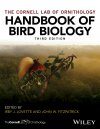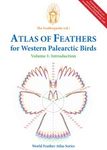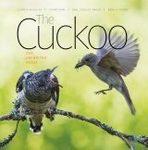About this book
Birds thrive in all conditions, from urban neighborhoods to the remotest oceans, driest deserts, and the wettest rainforests. From the tiniest hummingbird to the largest ostrich, their varied forms fascinate us – from drab to ostentatious, silent to raucous, earthbound to global nomad.
This much-anticipated third edition of the Handbook of Bird Biology is an essential and comprehensive resource for everyone interested in learning more about birds, from casual bird watchers to formal students of ornithology. Wherever you study birds your enjoyment will be enhanced by a better understanding of the incredible diversity of avian lifestyles. Arising from the renowned Cornell Lab of Ornithology and authored by a team of experts from around the world, the Handbook covers all aspects of avian diversity, behaviour, ecology, evolution, physiology, and conservation. Using examples drawn from birds found in every corner of the globe, it explores and distills the many scientific discoveries that have made birds one of our best known – and best loved – parts of the natural world.
This edition has been completely revised and is presented with more than 800 full color images. It provides readers with a tool for life-long learning about birds and is suitable for bird watchers and ornithology students, as well as for ecologists, conservationists, and resource managers who work with birds.
Contents
Notes on Contributors
Foreword
Preface
Acknowledgments
All About Bird Biology website
Chapter 1 Why Study Birds?
Ibry J. Lovette and John W. Fitzpatrick
Chapter 2: Avian Diversity and Classification
Irby J. Lovette
Chapter 3: How Birds Evolve
Irby J. Lovette
Chapter 4: Feathers and Plumages
Kimberly Bostwick
Chapter 5: Avian Flight
Bret W. Tobalske
Chapter 6: Avian Anatomy
Howard Evans
Chapter 7: Bird Physiology
Scott McWilliams, Elizabeth Adkins-Regan, and Carol Vleck
Chapter 8: Avian Food and Foraging
Thomas W. Sherry
Chapter 9: Avian Mating and Social Behavior
John Alcock
Chapter 10: Avian Vocal Behavior
Bruce E. Byers and Donald E. Kroodsma
Chapter 11: Breeding Biology of Birds
David W. Winkler
Chapter 12: Avian Migration and Dispersal
David W. Winkler, Judy Shamoun-Baranes, and Theunis Piersma
Chapter 13: Ecology of Bird Populations
Walter D. Koenig
Chapter 14: Bird Communities
Russell S. Greenberg
Chapter 15 Bird Conservation
John W. Fitzpatrick and Amanda D. Rodewald
Index
Customer Reviews
Biography
The Cornell Laboratory of Ornithology is a nonprofit membership institution working to understand and conserve the earth's biological diversity through research, education, and citizen science focused on birds.
Irby Lovette is the Fuller Professor of Ornithology at Cornell University, Associate Director for Academic Affairs at the Cornell Lab of Ornithology, Director of the Lab's Fuller Evolutionary Biology Program, and Curator of Genomics at the Cornell Museum of Vertebrates. He has authored more than 130 scientific publications on topics related to avian evolution, ecology, behavior, and conservation, along with numerous articles for the general public.
John Fitzpatrick is the Louis Agassiz Fuertes Director of the Cornell Lab of Ornithology and Professor in Cornell's Department of Ecology and Evolutionary Biology. His many contributions to ornithology and bird conservation include 140 scientific publications, discovery of seven previously unknown bird species in Peru, 45 years leading one of the world’s longest continuous studies of the ecology and behavior of a wild bird population, the Florida Scrub-Jay, and service on numerous conservation boards and panels. He is past president of the American Ornithologists’ Union and the recipient of that society’s highest awards for research (William Brewster Medal), conservation (Ralph W. Schreiber Award), and service (Marion Jenkinson Award).







































